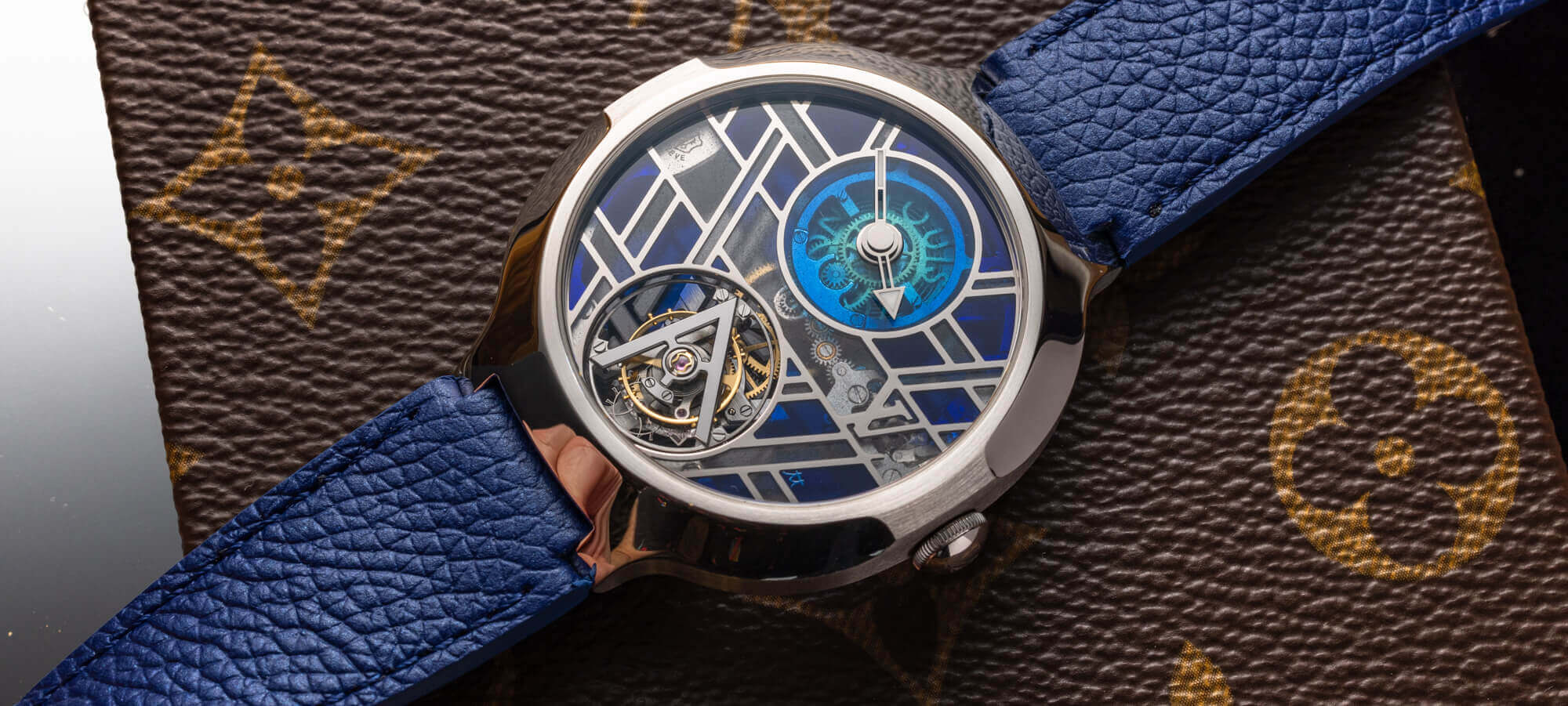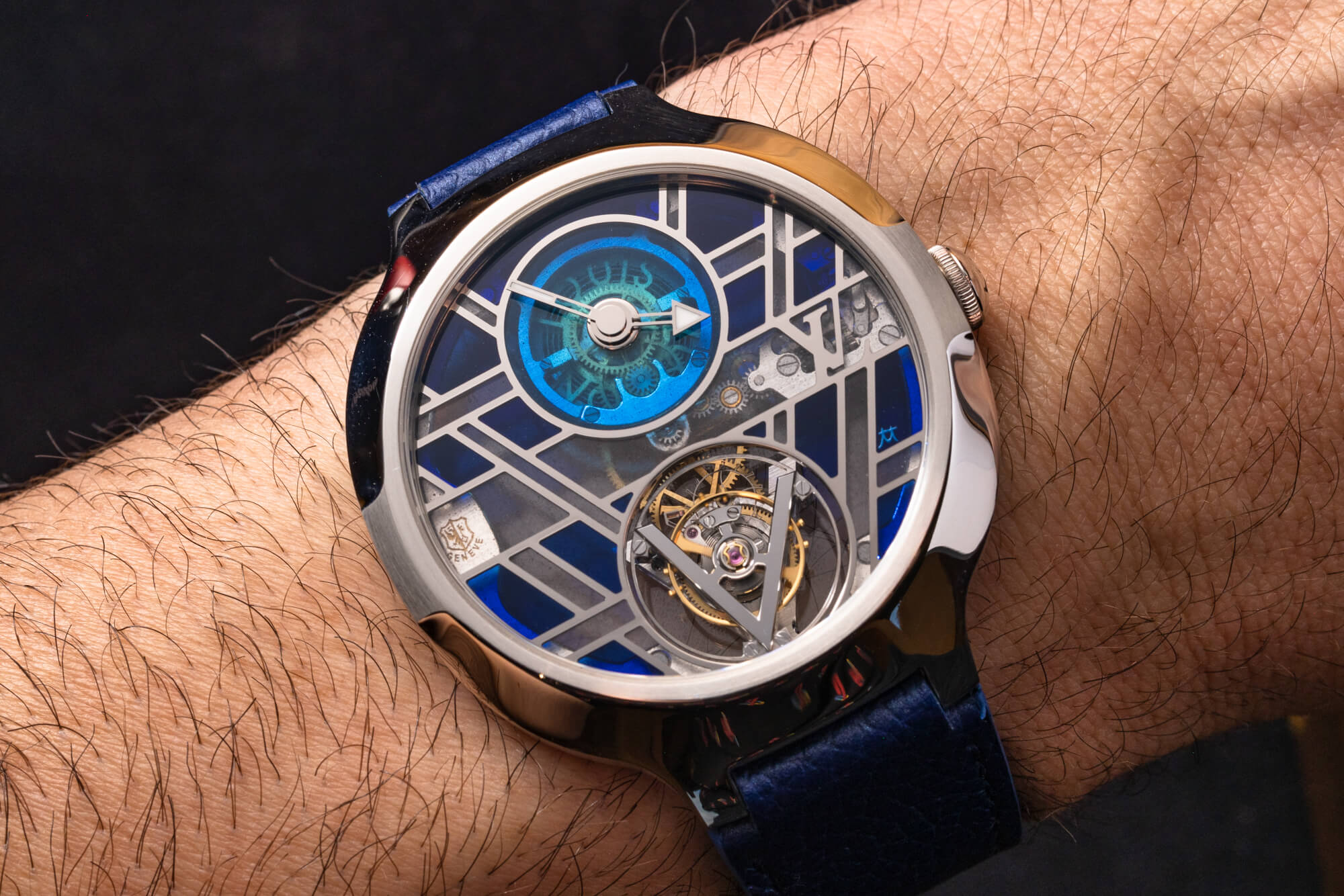 A few weeks ago, we shared a new release from Louis Vuitton that seemed to suggest that the brand hasn’t forsaken the fun, logo-heavy designs of its past. That was the fear (or at least mine) when the brand released its updated Tambour line last year, and followed it with almost complete silence other than a collaboration with Rexhep Rexhepi. Not only does the new Louis Vuitton Voyager Flying Tourbillon “Poinçon de Genève” Plique-à-jour keep the fun going, but it also shows off the brand’s artisanship with a very old and very time-consuming enameling technique. We got a chance to go hands-on with the watch to see just what was going on with the floating enamel and the dual-finished platinum case (oh, and the tourbillon, I guess).
A few weeks ago, we shared a new release from Louis Vuitton that seemed to suggest that the brand hasn’t forsaken the fun, logo-heavy designs of its past. That was the fear (or at least mine) when the brand released its updated Tambour line last year, and followed it with almost complete silence other than a collaboration with Rexhep Rexhepi. Not only does the new Louis Vuitton Voyager Flying Tourbillon “Poinçon de Genève” Plique-à-jour keep the fun going, but it also shows off the brand’s artisanship with a very old and very time-consuming enameling technique. We got a chance to go hands-on with the watch to see just what was going on with the floating enamel and the dual-finished platinum case (oh, and the tourbillon, I guess).
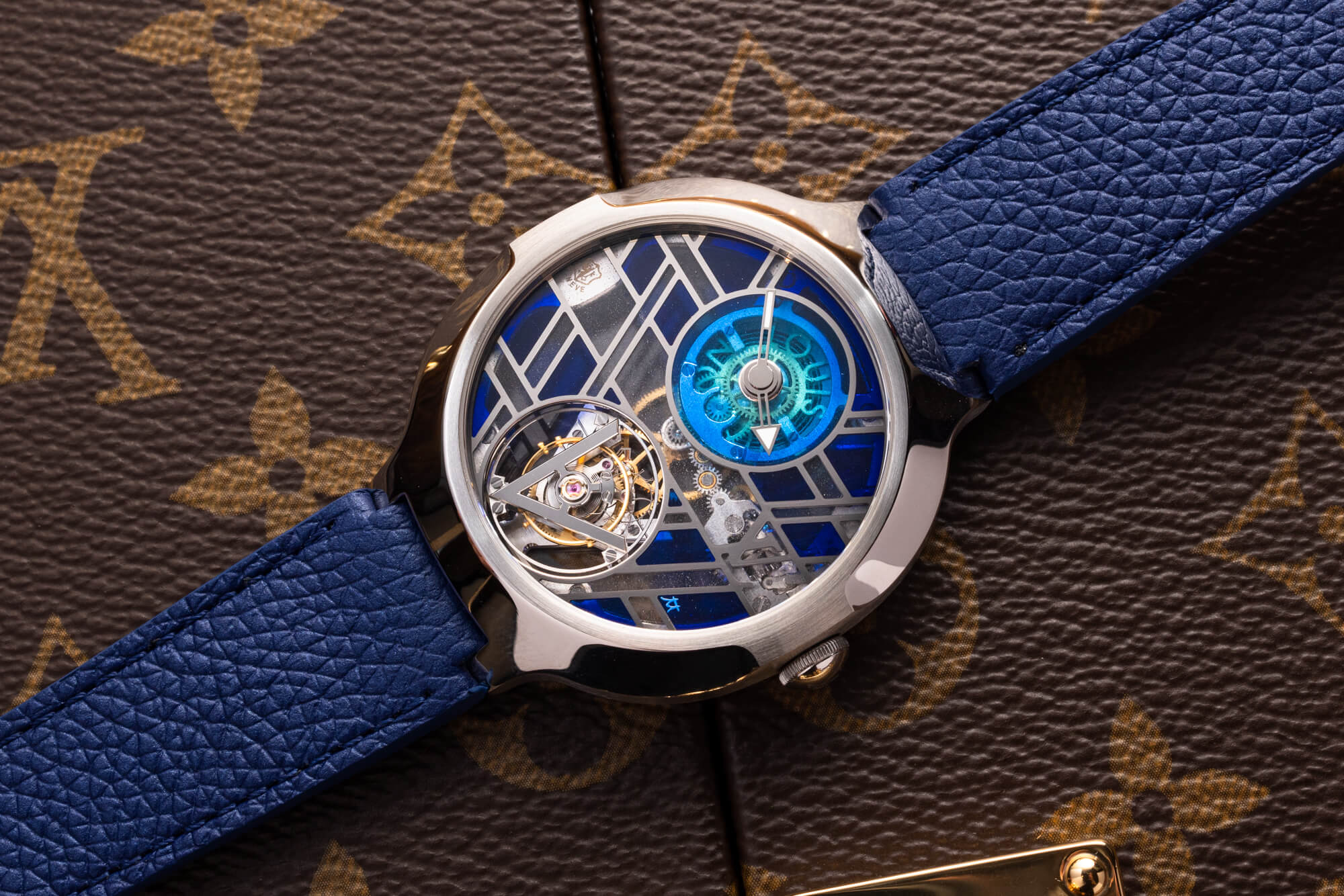 The case here is actually nothing new, having been introduced in 2016 as a GMT model. The case has varied in size and material but is always defined by its cushion shape that sits somewhere between round and square, as well as its dual finish that sees the predominantly polished case adorned with a brushed bezel that extends in flanks to the right and left of the sapphire crystal. On the Plique-à-jour, the case is platinum and measures 41mm in diameter and 11.68mm thick. At a glance, the case shape can seem a bit off, uncertain of itself and what shape it wants to be, but on the wrist, it delivers an easy-wearing elegance with comfort afforded by the calf strap and a folding buckle in platinum to match the case. While you may expect the bare minimum as far as water resistance goes, this Voyager gets a notch better with 50m. If you dare, I suppose you could splash around a bit.
The case here is actually nothing new, having been introduced in 2016 as a GMT model. The case has varied in size and material but is always defined by its cushion shape that sits somewhere between round and square, as well as its dual finish that sees the predominantly polished case adorned with a brushed bezel that extends in flanks to the right and left of the sapphire crystal. On the Plique-à-jour, the case is platinum and measures 41mm in diameter and 11.68mm thick. At a glance, the case shape can seem a bit off, uncertain of itself and what shape it wants to be, but on the wrist, it delivers an easy-wearing elegance with comfort afforded by the calf strap and a folding buckle in platinum to match the case. While you may expect the bare minimum as far as water resistance goes, this Voyager gets a notch better with 50m. If you dare, I suppose you could splash around a bit.
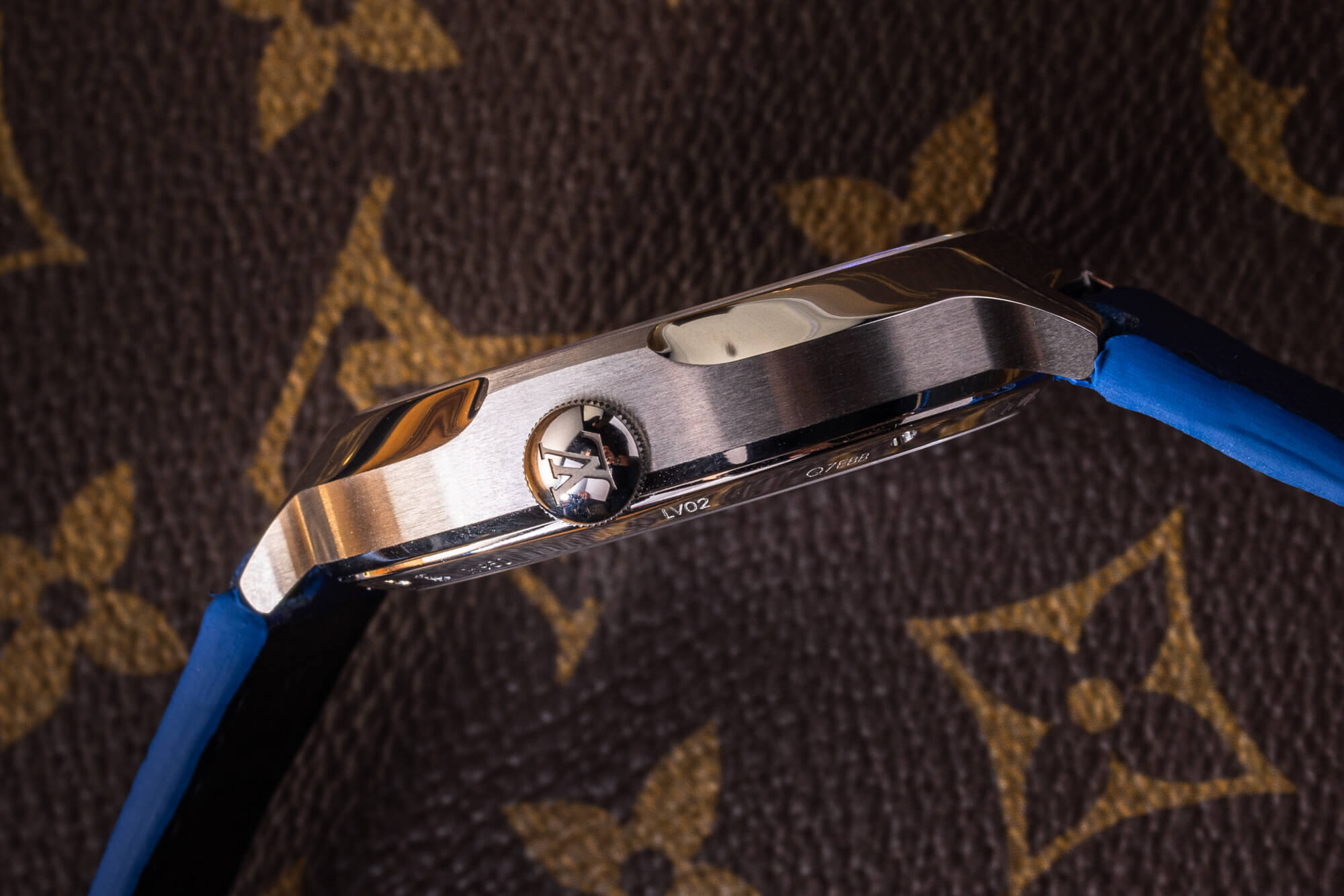
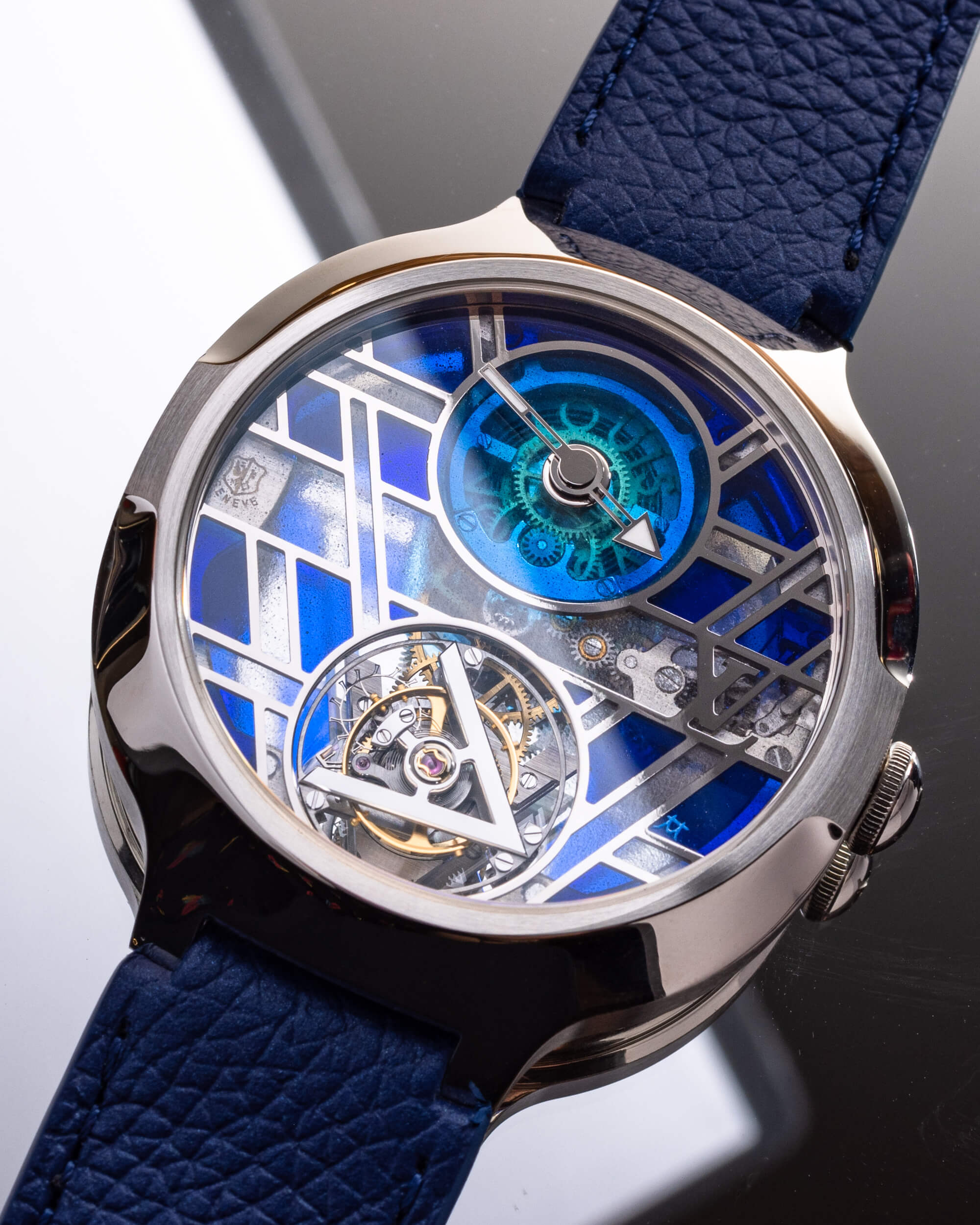
While I’m a fan of the contouring the case exhibits, with the brushed faux flank adding some nice dimension, the dial is the center of attention. This is where Louis Vuitton has leaned heavily on its La Fabrique du Temps artisans to create something splendid. Using the Plique-à-jour enameling technique creates panes of suspended translucent enamel like a stained-glass window. There is no backing at any time during the creation of the dial, meaning it’s an impressively delicate and painstaking process. The effect is appealing at first, but then my eye kept finding all the specks and distortions in the enamel, which make the movement below look a bit dirty (even though it’s clearly not). This is the same issue many have with a highly skeletonized movement: it’s great in press photos, but once on the wrist, all you see is skin and arm hair. Here, the dial is beautiful in most photos, having the look of frosted glass. When experiencing it in person, though, the even frosting of the renders reveals itself with dark spots here and there. For me, the idea of thinking my watch is dirty whenever I check the time is a bit too much.
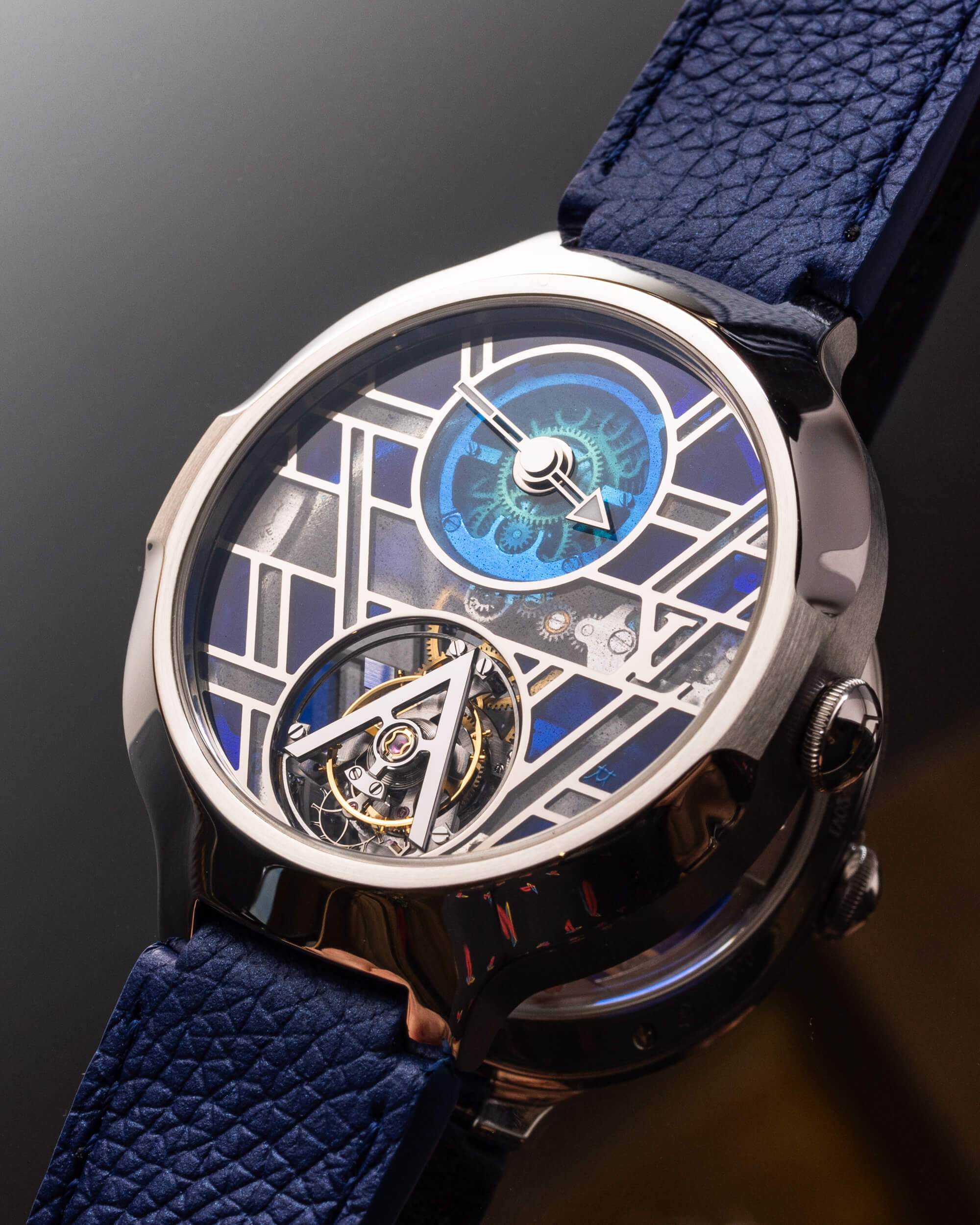
What I do like about the dial is the use of the monogram V from the brand’s logo, which had disappeared in the updated Tambour and I feared would be lost in a de-branding of LV watches. It was a relief to see the V repeated in the enamel frame, as well as in the flying tourbillon at 6 o’clock. The 12 o’clock time display is simple, and revisits the blocky hands that we’ve seen on numerous LV timepieces in the past — it does its job but is not the real purpose of the watch.
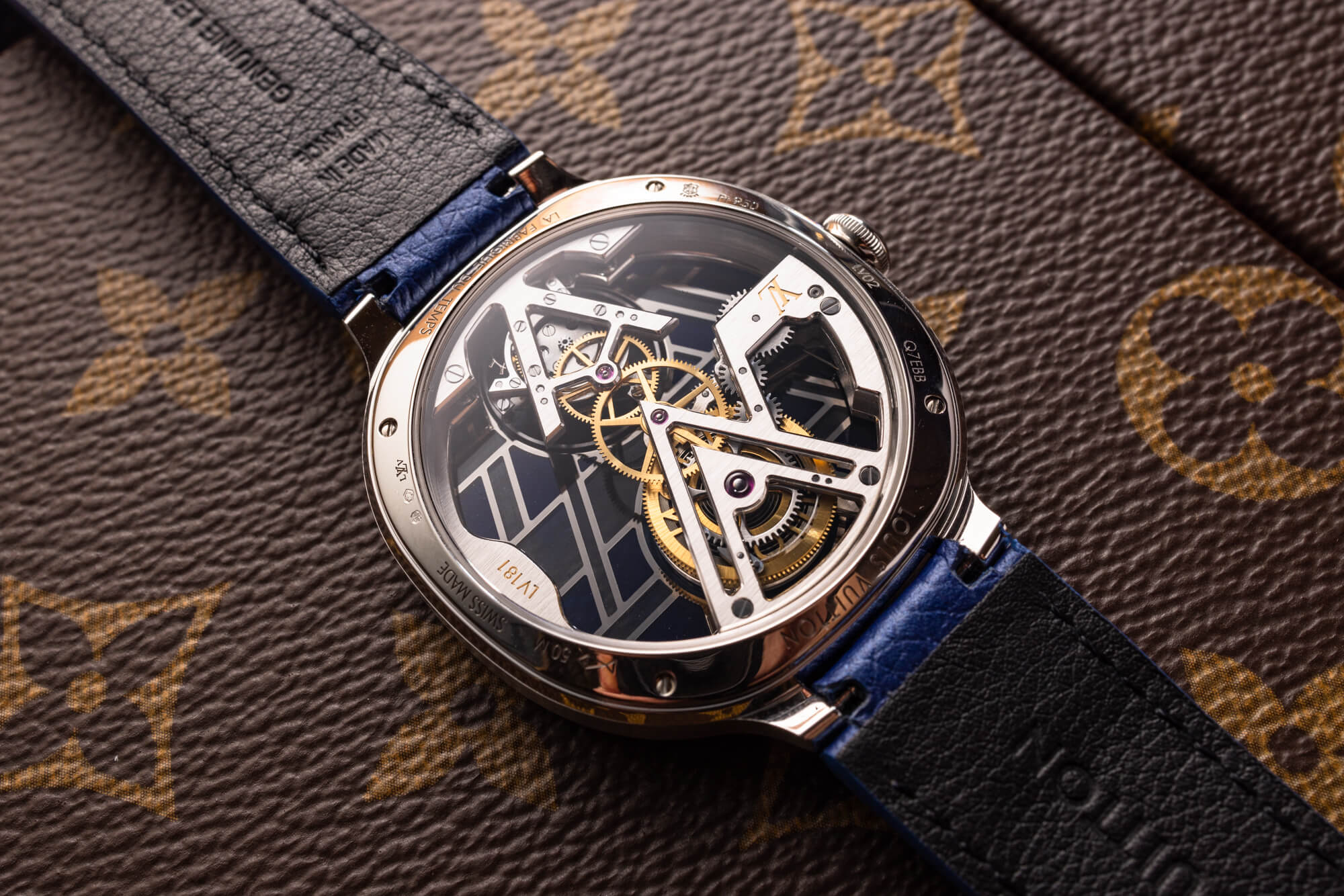
The movement is another product of La Fabrique du Temps and doubles down on the monogram V motif from the dial. Despite having a different name, the manual winding LV104 movement is essentially the same as many other LV flying tourbillon calibers. They all feature the same in-line symmetrical architecture, though they vary in their hand placement, with this one standing out for its 12 o’clock time display. The LV104 is condensed and skeletonized to allow the dial to have the greatest impact. The movement runs at 21,600 vph with a power reserve of 80 hours. The Poinçon de Genève (Geneva Seal), visible at 9 o’clock on the dial side, indicates that not only the movement but the entire watch has been built and finished in Geneva to the highest standards.
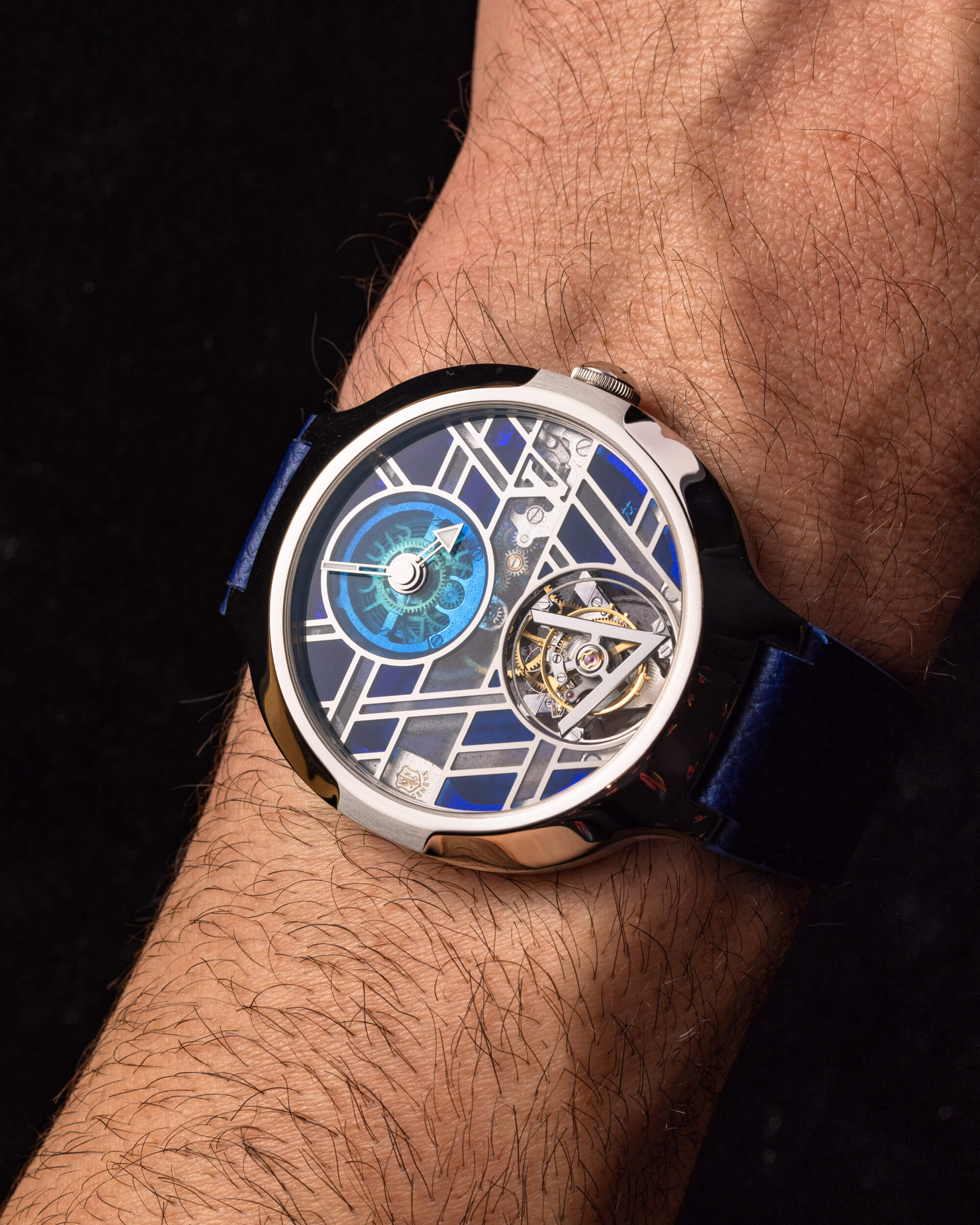
Taking a new approach to creating a dial is always a daunting task that should be celebrated in almost every case. This watch is no exception, with the achievement of remastering the Plique-à-jour technique something to be applauded. While the case and movement provide plenty of true delight, the reality of the dial in person leaves a bit to be desired. Like many high-craft watches, this one may be more about celebrating Louis Vuitton and LA Fabrique du Temps artisanal abilities than it is about the actual timepiece. The Louis Vuitton Voyager Flying Tourbillon “Poinçon de Genève” Plique-à-jour is priced at €330,000 EUR. For more information, please visit the Louis Vuitton website.

